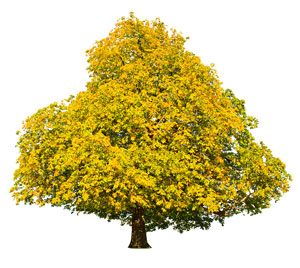 Summer brings with it BBQs, vacations, swimming, boating and enjoying the great outdoors.
Summer brings with it BBQs, vacations, swimming, boating and enjoying the great outdoors.
But it also means lack of water, storm damage and insect pests that attack our trees. Stressed trees are more susceptible to pests, disease, and winter damage, so now’s the time to protect your trees to keep them as healthy as possible.
Here are the activities we recommend you do during the heat of summer.
Water Your Trees and Shrubs Well
- Give all of your trees and shrubs a good drink once or twice a week, especially those that were recently planted. Morning is the best time to water and always check that the water penetrates at least 12 inches into the soil. Be sure to water at the drip line of the tree (underneath the outer branches, not just around the trunk) where most of the roots are.
- Soaker hoses on a timer are a good option as the water is less likely to run off. Another option that minimizes run off is a 5 gallon bucket with 8 to 10 small holes drilled in the bottom – just fill it with water, place it under the tree and let it slowly drain out. When it’s empty, move it to another spot and refill it. Keep doing that until you’ve watered all the way around the tree.
- For smaller trees, a 10 to 12 gallon watering bag can be placed around the trunk. The water will slowly seep out and keep the tree hydrated. Don’t forget to refill the bag when it’s empty.
- Avoid using sprinklers that spray tree foliage, especially on conifers, at wet leaves and needles can lead to fungal problems.
- Look for signs of drought stress, like wilting leaves, brown edges on leaves, and scorched or curling leaves.
- Consider applying a special soil root treatment, which helps roots draw in water and makes them more drought tolerant. It’s especially good for birch trees and new plantings. Call us at 203-240-1302 for a free estimate.
Don’t Forget to Mulch
- If you didn’t place a 2 to 3-inch layer of high-quality, organic mulch around young trees and plants in spring, do so now. Mulch helps keep organic matter in the soil around the tree, conserves soil moisture, and provides weed control. Don’t over-mulch! For tips on how to do it right, see our article on Mulching Trees.
Avoid Major Pruning & Planting
- While dead, damaged or diseases branches should always be removed when you notice them, avoid any other pruning during the summer so as not to overly stress your trees.
- Hazardous branches or trees should also be removed so they don’t become dangerous during summer storms. Cabling or bracing can sometimes also help with possibly dangerous trees limbs.
- Deadhead and tidy up spring-blooming trees and shrubs that have finished flowering.
- Avoid planting any new trees until fall; planting during the heat of summer will cause a lot of undue stress for the trees (and possibly for you too!).
Inspect Trees and Shrubs For Pests and Disease
- Regularly check for signs of common pests and diseases, like sticky substances or sap (from sap-sucking insects like aphids), black or white mold or mildew, spots and dead patches on leaves, and scales insects on the bark. It’s easier and more effective to treat these early, rather than trying to eliminate the problem after significant damage has been done.
- With emerald ash borer in our area, keep an eye out for any damage to your ash trees and contact us right away for treatment if you notice anything unusual.




